
Opened: 30 May 1968
Closed: Aug 1989
Location: Opera House Square
Cost: $100,000
Seating Capacity: 300
In 19th century America, opera houses were common in the many fledgling towns that were being established as the United States grew and spread out. Most of these towns were isolated from each other and far from major cities where theater was prominent. There were very few options for entertainment, unlike today when movies can be distributed to theaters or streamed online. Instead, acting troupes, performers and lecturers would travel throughout the country, bringing exposure to the arts, philosophy, science and more. In some cases, an opera house would even be used for public meetings if no other facilities were available to house all of the citizens.
Lagoon’s Opera House was the idea of former park manager Robert (Bob) Freed as an alternative form of entertainment at a time when concerts at the park were coming to an end. The Midway expanded northward in 1965 and a spot for the Opera House was planned east of the new Bamberger Fountain.
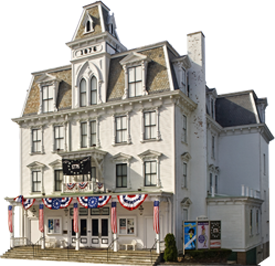
At first, Bob & his brother Peter considered relocating an old church they had found, but later decided it would be better to start from scratch. Bob turned the planning and design of the opera house and surrounding square over to Peter, a self-proclaimed “amateur landscape architect”. Peter later recalled the experience as one of the most fun things he had done in his life. The square was based on a typical New England town square from the turn of the 20th century. One similarly shaped opera house that could’ve served as inspiration is the Goodspeed Opera House in Connecticut.
Many authentic furnishings were collected from around the country to decorate the interior. Bronze lighting fixtures came from the old Metropolitan Club in New York City. An elevator cage was salvaged from the recently demolished Healy Hotel in Ogden and transformed into the theater’s box office. The marble and molded metal ceiling in the lobby also came from the Healy. The chandelier in the lobby once hung in a mansion on 5th Avenue in New York City and the large chandelier in the theater was from the legendary Salt Lake Theatre. Seats came from many different old theaters including one in Wyoming.
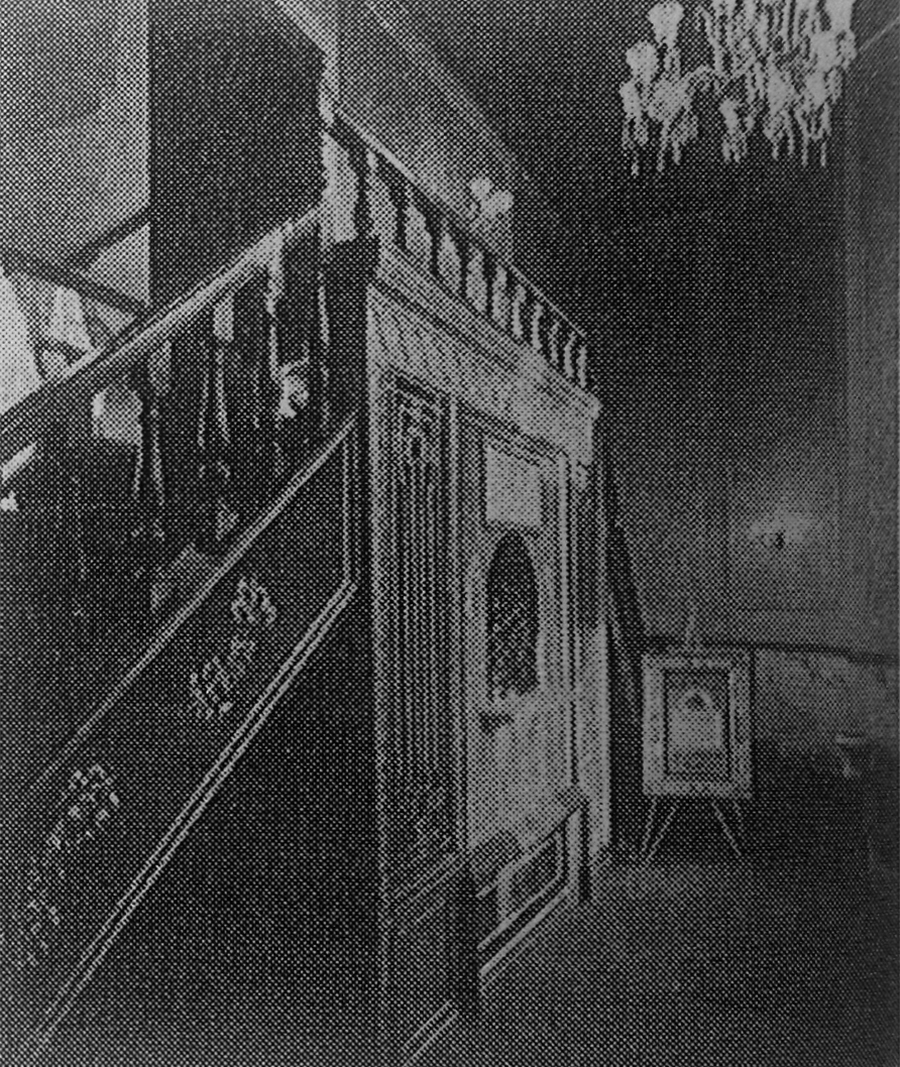
Features common in a turn of the century opera house were included inside. A small balcony, accessed by stairs in the lobby, looked over the hall and box seats were perched above a stage lined with footlights.

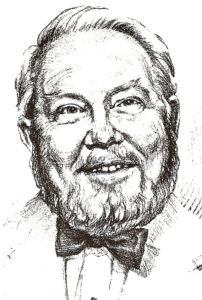
To produce the shows, Bob approached a long-time friend and former business partner. Robert Hyde Wilson was a director, playwright and drama professor at the University of Utah. Thirty years earlier, they established The Playbox – a small theater in Salt Lake City. Wilson was appointed by Bob to be impresario, or producer and together they founded the Lagoon Opera House. Wilson directed 32 plays at the Opera House over a period of 13 years, most of which (if not all) showcased University Of Utah drama students.
Tickets for the grand opening on 30 May 1968 were sold out for a 19th century melodrama entitled Poor Of New York. The small venue became a popular place for theater on the Wasatch Front and generally featured three different productions for about a month at a time each season.
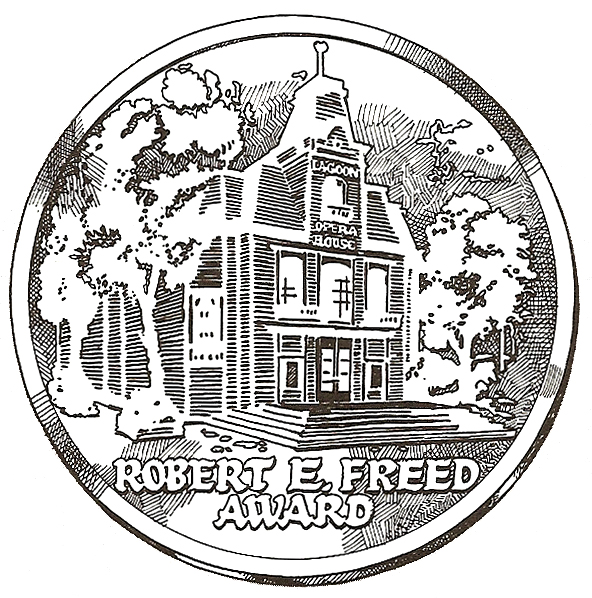
After Bob Freed’s untimely passing in 1974, Wilson created the Robert E. Freed Award in his honor. It was given each year to one or two members of the company “making the greatest contribution to the season”. One of the first awardees was Anne Rowe, who had appeared in plays at the Opera House many seasons and had become a favorite among fans. Ron Van Woerden, another awardee was also an assistant to Wilson and later became Lagoon’s entertainment director. His voice can still be heard in a recording about the Carousel that plays during the ride.
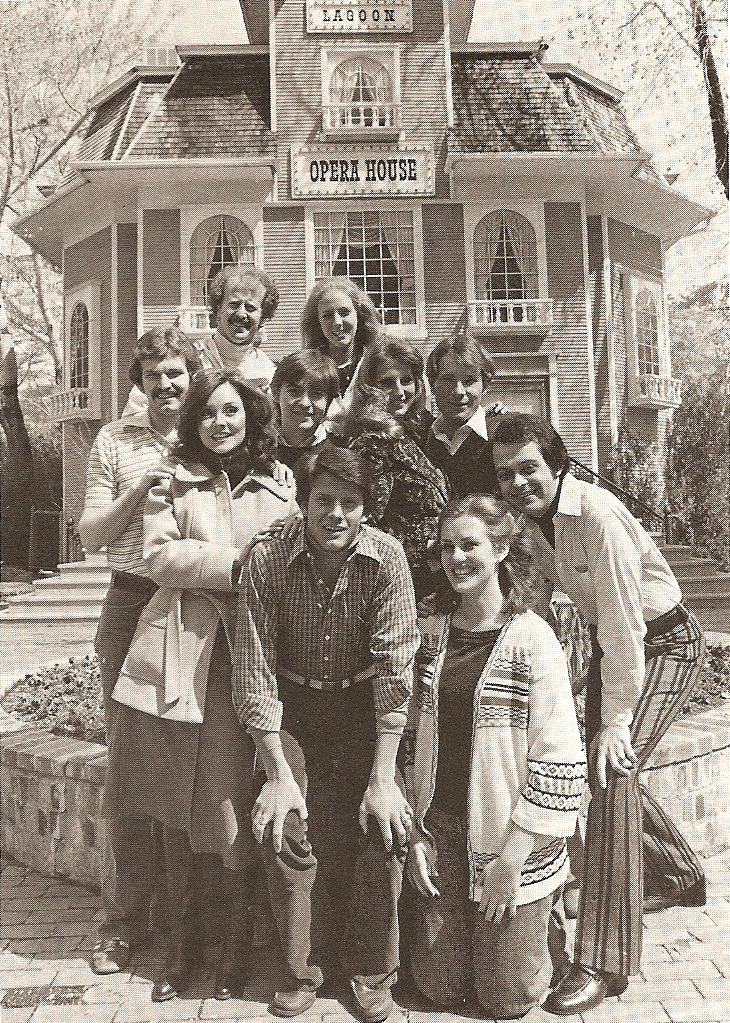
On Sundays, employees who were members of The Church Of Jesus Christ Of Latter-Day Saints were allowed to use the Opera House for sacrament meetings. Bob, who was not a member of the church, felt they should still be able to attend their church meetings if they had to work on Sunday, so they were given a half-hour paid break to do so. J. Clark Robinson, a member of Lagoon’s management was also a bishop in Farmington and took turns leading the meetings with another area bishop. When Pioneer Village opened, the meetings were moved to the Coalville Chapel until they were discontinued.
In 1983, the usual three-shows-per-summer format was done away with and one show was featured for the entire season. It was in that same year that an orchestra pit was added, the stage was renovated and a new sound system was installed.
Robert Hyde Wilson retired in the early ’80s and Lagoon began leasing out the Opera House to outside production companies. In 1989, it was leased to JPB International Events for a toned-down version of Little Shop Of Horrors. It was directed by Salt Lake Acting Company founder Ed Gryska. The show’s producer, Jeffry Belnap, also produced shows for Disney theme parks, Knott’s Berry Farm and others.¹ Despite pleased audiences, good reviews and the work of Belnap himself talking to crowds around the park and offering discounted tickets, the show closed two weeks early. As Belnap discussed the problem with Deseret News theater writer, Ivan M. Lincoln, he suggested that Lagoon might look into using the Opera House for the kind of musical revues that were popular in the Lagoon Music Theater at the time. He later explained that groups like Bountiful Community Theater and the Hale Family “had moved into the city, so Lagoon was not the focus that it had been during the Wilson era”. Recently, Jeffry Belnap recalled, “It was very satisfying to hear from one of the Freed brothers say this show – Little Shop – was on par with the best ever produced there.”
As Ed Gryska of the Salt Lake Acting Company once said, “You don’t go into regional or community theater to turn a profit. You do it for the love of theater, the love of art, and you work like crazy not to lose too much money.”
The Opera House never reopened after the 1989 season, even though the possibility of using it again has been mentioned from time to time². The building remained in use for employee orientations and entertainment auditions, but now it’s mostly utilized for rehearsals and storage. In 2005, the lobby was used for the Madame Nitrous fortune teller attraction during Frightmares. Other than that, the building has been closed to park guests since 1989.
Today, the building invokes curiosity for those who were never able to watch a show inside, while reminding thousands of others of the good times had within.
Years after it closed, former Lagoon general manager J. Clark Robinson said, “While the Opera House never paid for itself in ticket sales, it and the whole square gave Lagoon an image that is still worthwhile”. Although its now been closed longer than it was open, the building still receives periodical upgrades. From fall 2016 to spring 2017, the exterior was repainted and the wooden shingles on the roof were pressure washed and re-stained. At that time the old Opera House sign on the front was removed. The front steps were torn out and rebuilt toward the end of the 2017 season.
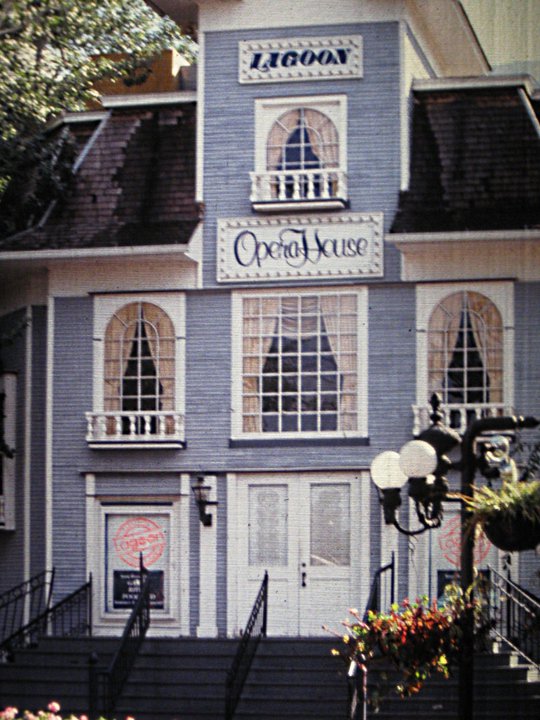

GALLERY

NOTES
1. Belnap’s other experience included producing events for the Louisiana World Exposition and “for Bob Jani – the great producer and first VP of Entertainment at Disneyland (including Hollywood Bowl and an ’84 Olympics USA team fundraiser)”. He also produced the 1988 Lagoon Opera House show, Whoopee, and served as musical director for both the ’88 and ’89 shows. Belnap “brought Mark Huffman in to musically stage Little Shop and he would become the Entertainment Director for Lagoon a few years later for an 8 year run. Mark now directs entertainment for Walt Disney World.” After producing the Opera House’s last show, Belnap went on to produce events for Walt Disney World and conventions and is now a technology consultant.
2. Some brief mentions of a possible reopening of the Opera House from the Deseret News:
“Reopening of the Lagoon Opera House is also being considered this summer, but so far these plans are still just in the talking stages.” (17 Apr 1992)
“There had been talk of Salt Lake Acting Company possibly mounting a second summer show in the currently dark Opera House at Lagoon, (a ‘Forever Plaid’-style musical revue called ‘The Cardigans’ was being mentioned). However, funding fell through so this isn’t even on the back burner.” (31 May 1992)
“[Mark] Huffman has instituted a five-year plan for Lagoon’s entertainment division, including the possibility of the park’s famous Opera House being reopened and a new, indoor theater for its Music USA revues.” (16 Aug 1996)
“[Peter] Freed said he always takes his out-of-town guests into the old – and long vacant – Opera House… ‘They just love it. It only seats 300, but we could have a really delightful show in there,’ he said. But reopening the Opera House is still down the road a bit. It’s a budget thing, Freed said.” (16 Apr 1999)

MORE FROM LHP

RefeRenCES
New Style Theater Will Open In S. L. Deseret News, 2 Dec 1938.
Lagoon Opens Opera House. Deseret News, 29 May 1968.
Old Fashioned Opera House Bows in as New Attraction. The Milwaukee Journal, 16 Jul 1968.
Souvenir Section. Davis County Clipper, 20 Jul 1983.
Walker, Joseph. So long Triadtheater – it’s been good to know you. Deseret News, 11 Apr 1986.
Lagoon and Pioneer Village are opening for the season. Deseret News, 26 May 1989.
Best ‘ride’ at Lagoon: ‘Little Shop’. Deseret News, 30 Jun 1989.
A Producer’s-Eye View Of Showbiz. Deseret News, 6 Aug 1989.
Accessible Fun: Subtle Changes At Lagoon Open Up Park To Disabled. Deseret News, 17 Apr 1992.
Utahn played a starring role in S.L. Valley theater. Deseret News, 24 Oct 1999.
Freed Chavre, Jo Ann. The Bob Book: A Collective Memory of Robert E. Freed. Salt Lake City, Utah, 1999.
U. theater icon Robert Wilson dies. Deseret News, 7 Jan 2001.
Flynn, Katherine. The Big Potential of Small-Town Opera Houses. National Trust for Historic Preservation, 9 Jun 2017.
Theatre History. HistoricElitchTheatre.org, accessed 10 Apr 2018.
RE: Lagoon History comment. Emails from Jeffry Belnap to author, Feb 2011.


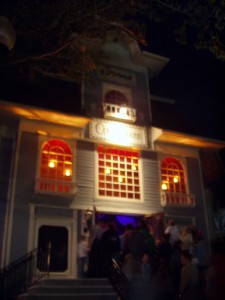





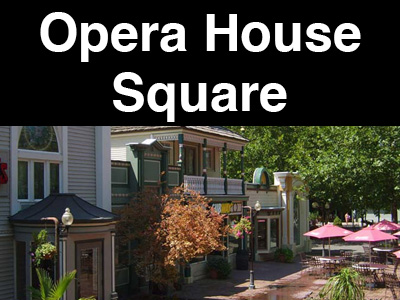
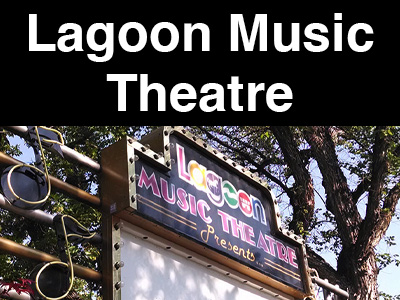
3 replies on “Lagoon Opera House”
Would Lagoon ever consider re-opening the opera house for actual opera?…perhaps condensed versions or short scenes or concerts? I’m producing a new kind of version of opera that might very well work there that will be accompanied by backing tracks and have projection scenery making it easy to put up and to do over and over again.
-Lynnette Owens
That sounds interesting, but it’s very doubtful Lagoon will ever re-open the Opera House, mostly because of the upgrades it would need for wheelchair access, etc. You might try contacting Lagoon directly with your ideas: http://www.lagoonpark.com/parkInfo/contactus
I used to act in plays there when I was a child around 1986, 1987.
I believe the organization that rented it at that time was called AGATE (Academy of the Gifted and Talented Entertainers). I loved that place and this article brings back memories. Thank you for writing it and for having pictures.